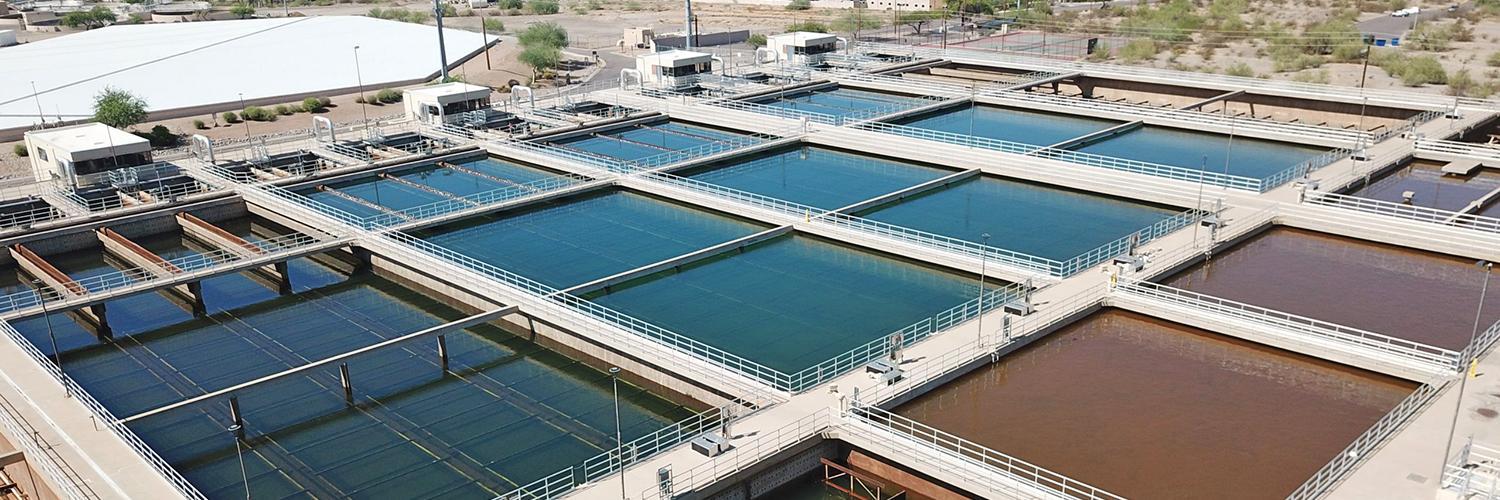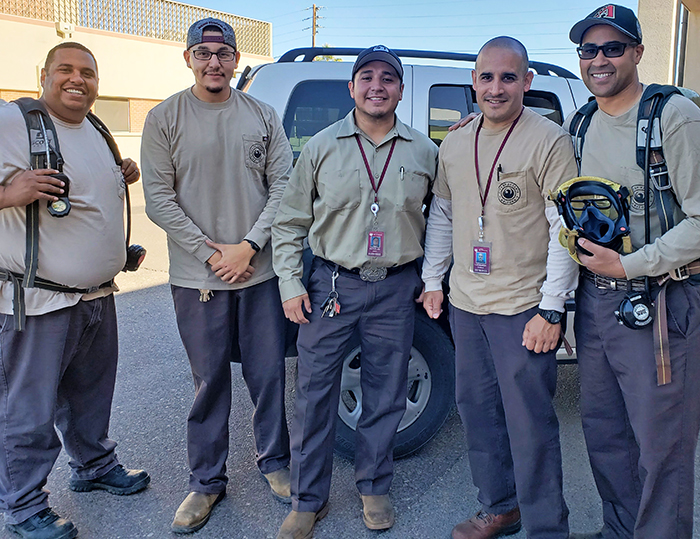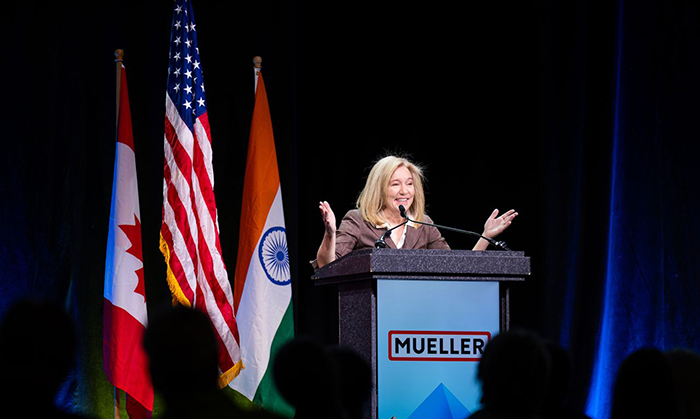
Behind the scenes and under pressure: Supporting the essential work of water system operators
When you turn on the tap and clean water flows out, it’s easy to take it for granted. But behind that consistent service is a group of professionals working quietly, and often invisibly, to keep our water systems safe and running.
As just one example of the vital work water operators do, Kathryn Sorensen still remembers the day she managed to escape the daily demands of her office as the then director of Phoenix Water Services. On that rare day in the field, she visited one of the city’s surface water treatment plants to say hello and thank the crew.
That’s when Sorensen came across a group of young men preparing to do one of the most dangerous jobs in the field: routine maintenance on a gaseous chlorine system. The chlorine gas is deadly on its own, and is in canisters that could accidentally explode.

“They let me take their picture. It’s still my favorite picture,” Sorensen said. “If you know what to look for, you can see the highly specialized safety equipment they’re holding. They were about to go in and service a system that, if mishandled, could be deadly. But they were calm, professional and ready. And there wasn’t going to be any story in the paper about it. No fanfare.”
A message of support for water system operators
Sorensen, now the director of research for Arizona State University’s Kyl Center for Water Policy, a pillar of the Arizona Water Innovation Initiative, recalled this story as part of a recent keynote address she was invited to give at the American Water Works Association – the largest organization of water supply professionals in the world – annual meeting.
“I tried to highlight the vital and also brave role that water operators play in every community in this country,” Sorensen said. “Police and fire get a lot of kudos, as they should, but not so much for water utility operators. And in many ways, their job is even more important and can be just as dangerous.”
Despite the essential role they play, water operators remain underappreciated, underpaid and often misunderstood. Sorensen’s respect for water operators stems from decades working in water policy and operations herself. It was a McClintock High School economics class that first sparked her passion.
“Economics is the study of the allocation of scarce resources—or who gets what. Growing up in Arizona, where water is incredibly valuable, it was natural to pair the two.”
After earning a doctorate in economics at Texas A & M, Sorensen spent much of her career working in public water and wastewater utilities for the cities of both Mesa and Phoenix. Over time, she grew to love operations work because it’s where policy meets real-world infrastructure.
Today, Sorensen is training the next generation while continuing to shape water policy at the state and national level, as well as advocate for those working on the front lines of water infrastructure.
A system under pressure
Based on her own experiences, Sorensen’s overriding message to conference attendees was to “be constant.” She was inspired by a quote from the 1813 Jane Austen novel Pride and Prejudice.
“I told them I knew this wasn’t exactly a Jane Austen crowd, but the quote is a favorite of mine, which is that ‘courage is a form of constancy.’ And that’s my message to them. Yes, we are in a chaotic time. But your work is too important. Be constant.”

Sorensen says this message is important now because water system operators, engineers, electricians, mechanics and other professionals, are under a tremendous amount of pressure.
“Local water utilities are just where the rubber hits the road. Utilities are expected to get the water to the right place, at the right time, at the right quality and pressure—24/7, 365 days a year,” says Sorensen. “But they’re doing it with minimal support. It’s challenging.”
In addition, the service pressures for water utilities are expanding rapidly. Utilities are being asked to monitor and remove emerging contaminants like PFAS, respond to drought conditions and even support wildfire suppression efforts by maintaining adequate water pressure and supply.
“Look at the wildfire issue,” Sorensen said. “These utilities are supported minimally at best, but then in a crisis, they’re expected to perform to a standard that is unattainable. The system wasn’t designed for this level of demand, and now it’s expected to deliver perfection.”
Water utilities across the country are also facing a severe shortage of qualified personnel as experienced operators retire, a trend often referred to as the “silver tsunami.”
“It’s a huge challenge,” Sorensen said. “The workforce is aging. And because the skill sets are so specialized, utilities end up just poaching from one another. There aren’t enough young people entering the field.”
While some community colleges offer training programs, they’re not widely known, and public utilities often lose graduates to private-sector employers who can offer higher salaries.
In the face of these challenges, Sorensen also believes that cooperation between utilities is essential, especially as they face peak demand and aging infrastructure.
“If Arizona and the Valley of the Sun are going to compete in the new economy, whether we’re talking about AI, microchips or food and beverage, we’re going to have to work together regionally."
Supporting water operators
Sorensen hopes that by shining a light on the people behind the system, more residents will start to see water service as the essential public good it is, and be willing to support it accordingly. She says there are several ways for residents to support water operators.
The first is to learn more about how water systems work and to recognize the professionals behind them. “People don’t understand where their water comes from. It’s just a black box mystery,” says Sorensen. “And these people deserve more credit than they usually receive.”
Second, residents can support funding for water infrastructure, even when it comes with a rate increase.
“Elected officials often resist raising rates for fear of backlash,” says Sorensen. “But we need to be willing to pay for the quality and safety we expect.” Research from the Kyl Center team indicates that many utilities could, and indeed should, raise their rates without large adverse impacts to ratepayers.
Finally, she encourages professionals to support young people considering careers in water operations. “I think we need to continually bring up the next generation and create opportunities for them. It’s a great field and people come to it from all kinds of backgrounds. Water issues never get old because there’s always something to learn.”
Despite the challenges, Sorensen says working in water operations is incredibly rewarding.
“These are people who understand the importance and remain dedicated despite the obstacles. And I love that,” Sorensen said. “They’re out there risking their lives doing incredibly important work for absolutely no fanfare, because they care about their communities.”
Related stories: